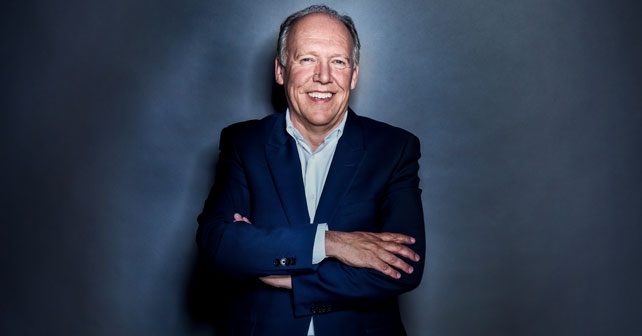
Jaguar is taking a radical leap with its first SUV, the F-Pace. We sat down with design chief Ian Callum to talk about the F-Pace, and the challenges autonomous driving poses for the industry.
The F-Pace is Jaguar’s first SUV – knowing how specific you are about your design vision for Jaguar cars, how difficult was it to transfer that to an SUV?
It was very challenging. It wasn’t something that we were used to – dealing with all that height, and yet trying to keep a sense of speed and elegance to the car. We built four or five models, worked our way through it, and got better-and-better. Some of the models were more extreme than others, but it really was just learning about how to protect the sense of speed and the lines – without getting too square and boxy. The first model we did was quite utilitarian looking – still handsome, but it was just a little bit too stiff for my liking. So, as we went through iteration after iteration, it kind of loosened up a bit. You know, it’s like drawing really, the more you do it the better it gets. So, yes, it wasn’t easy.
Your sedan range looks quite similar to each other. Is that something that could confuse customers?
No, I think when you’re in the showroom, you can see the difference between the cars. The reason why we made the new XE and XF look similar, along with the XJ and the F-Pace, is because I want to build up the family image – it’s important for our cars to be recognised as a Jag! All brands do the same thing. I think now that we’ve got the family established, and people are starting to recognise the brand more, the next generation of our cars will be a little more diverse aesthetically. Once we’ve got sales momentum, we can be braver in the design of our cars.
What’s your view on the growing trend for larger touchscreens, and is this the future of interior design?
Well, not necessarily, the future is open for anybody to decide what it’s going to be. But it is very fashionable at the moment to have these great big, tablet touchscreens. But when you’re travelling fast and you’re trying to find a certain function on the screen, and you don’t know where to place your hand, it can become a little bit inaccurate – unless you take your eyes off the road. So, I’m still a fan of a mixture of screens – where each one has its own definable function, along with switches as well. Because, at speed, switches are easier to get used to without taking your eyes off the road. Personally, I’m not a big fan of big screens. I think it’ll trend for a while, and I think it’ll come and go. Expect for in a Tesla, because they need it.
The future trend seems to be autonomous cars, how do you think that will impact the future of car design?
Well, there are two stages to autonomous cars – one is that you have your current car that you can drive, and, when needed, you switch to autonomous mode. You have a choice, but the overall function of the car won’t change internally. Because, it will, by default, still be a driver’s car. But I presume, at some point in the future, people will build cars that will never require a driver – and that takes on a completely different mindset. I mean, does the car now just become a capsule – or, do you think even if people buy a capsule they would still want some branding on the capsule? Would they still want it to reflect their character, as cars do – even though they’re not driving? It’s an interesting conundrum, and I don’t actually know the answer to that. If somebody leases or wants to buy their autonomous capsule, does its still matter to them what it looks like? I think it will. If you’ve got money, you would still want your Range Rover capsule or your Jaguar XJ capsule. I don’t think that the statement of style that we make with our cars will go away.

















Write your Comment